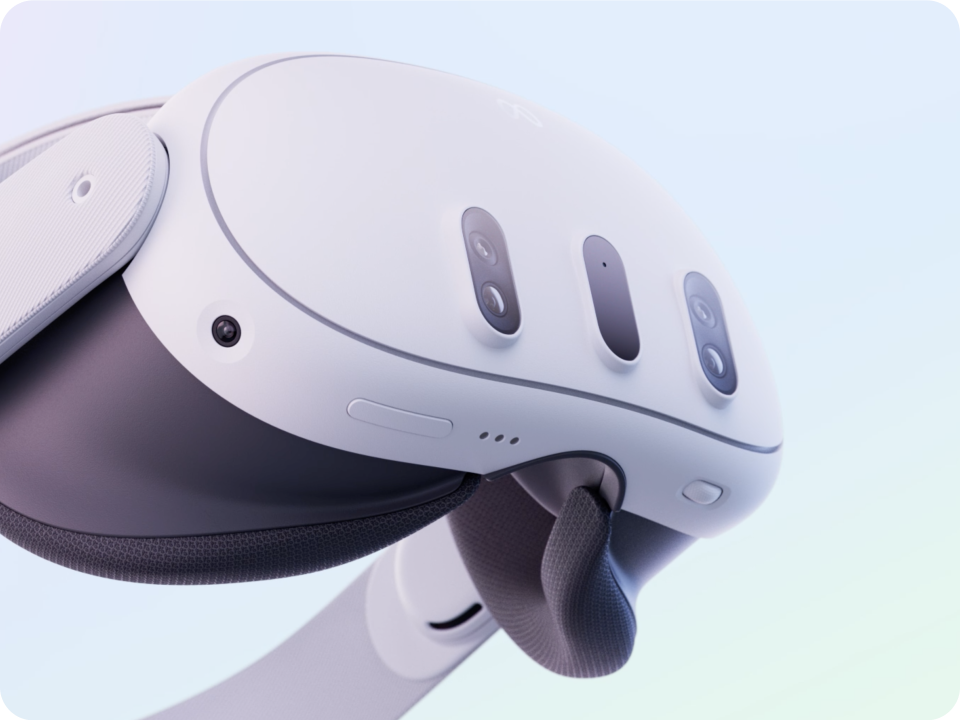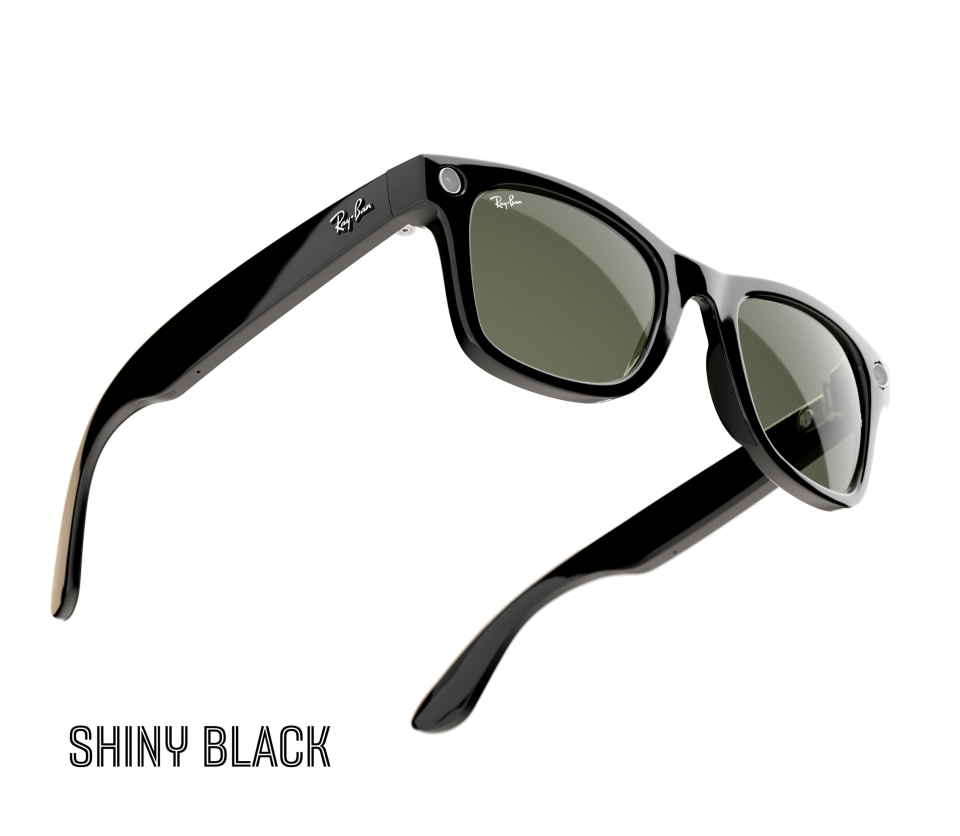Meta Connect 2023: Meta Quest 3, Ray-Ban Meta Smart Glasses

Wearable arrivals. Developer conference sees pre-orders available for Meta Quest 3 headset, plus new Ray-Ban Meta smart glasses
Meta Platforms at its Meta Connect 2023 developer conference has updated a couple of wearable devices, alongside its other announcements about AI chatbots with personalities etc.
Meta announced that its new virtual reality headset, Quest 3 is now available for pre-ordering, and it also announced a new generation of Ray-Ban Meta smart glasses.
Mark Zuckerberg in June had sought to pre-empt Apple’s announcement about its Vision Pro ‘spatial computing’ headset’, when he introduced the latest version of Meta’s VR headset, namely the Meta Quest 3 headset which he said at the time would arrive in the Autumn.

Image credit Meta
Meta Quest 3
Now Meta has announced that its mixed reality Meta Quest 3 headset will retail for prices starting at $499.99 for the 128GB version and $649.99 for the 512GB version.
Pre-orders are open now and the headset will go on sale from 10 October.
So what is new, compared to the previous generation?
Well first off the Meta Quest 3 headset offers a 30 percent improvement in visual resolution and 40 percent louder audio range than Quest 2. Meta also said it is also thinner with a more balanced weight distribution than Quest 2 for maximum comfort.
Meta is touting the “immersive experiences like virtual reality” that the headset can offer, but which also incorporate the physical world.
“We believe you shouldn’t have to choose between them,” said Meta. “That’s why Meta Quest 3 features breakthrough mixed reality that enables a spectrum of experiences. You can play a virtual piano on your coffee table or open a portal to another dimension right in your living room – all while high-fidelity, full-colour Passthrough keeps your physical surroundings in sight with over 10 times more pixels compared to Meta Quest 2.”
Users can double-tap the side of their Meta Quest 3 headset to seamlessly transition between a fully immersive experience, and a blended environment with virtual elements overlaid on their physical surroundings thanks to cameras facing forward.
Under the hood, the Meta Quest 3 doubles the graphic processing power of Quest 2, thanks to the new Snapdragon XR2 Gen 2 platform Meta helped develop in collaboration with Qualcomm Technologies.

Image credit Meta
Meta said this means that load times are faster, and the headset offers crisp details in immersive games.
The headset also offers a 4K+ Infinite Display, which Meta said achieves a nearly 30 percent improvement in resolution compared to Meta Quest 2. The user can experince 25 pixels per degree and 1,218 pixels per inch for the best resolution across the entire Quest line.

Image credit Meta
And Meta has slimmed down the headset, as it now offers a slimmer profile, thanks to the next-gen pancake lens optical stack that gives Quest 3 a 40 percent slimmer optic profile compared to Quest 2.
Meta also claimed that thanks to Quest 3’s redesigned, thinner profile, it offers a more customizable fit and balanced weight distribution than Quest 2.

Image credit Meta
And lastly Meta claims there is a new level of spatial audio, as the Quest 3 offers a 40 percent louder audio range than Quest 2.
Meta of course is still betting big on the Metaverse, despite investor misgivings as it still has to pay off its huge investment.
Indeed, Meta’s VR division has suffered a $21bn (£17bn) in losses since the start of 2022.
New Ray-Ban | Meta Smart Glasses
Meta at the developer conference also announced a new generation of Ray-Ban Meta smart glasses, available for pre-order now on both Meta’s and Ray-Ban’s websites, with prices starting at $299 (availability 17th October).
The new glasses feature improved audio and cameras, as well as over 150 different custom frame and lens combinations.
Furthermore, Meta said they are lighter and more comfortable, and users can now livestream from the glasses to Facebook or Instagram, and use “Hey Meta” to engage with Meta AI (via voice).
It had been back in September 2021 when Meta took its first step in its long-term goal of delivering true augmented-reality spectacles by teaming up with luxury sunglasses maker Ray-Ban.
Facebook’s AR glasses are designed to overlay digital imagery on the user’s view of the real world.
It gives wearers the ability to listen to music, and capture photos and short videos and share them across Facebook’s services using a companion app.
In 2022 Meta added calling and messaging capabilities into the wearable device.
Now with the latest generation, which Meta says has been redesigned from the ground up to improve all the core features of the first generation after listening to feedback from the community.
Specifically, the new generation offer improved audio, with all-new custom designed speakers with extended bass, higher maximum volume, and improved directional audio that provides reduced audio leakage for improved calls, music, and podcasts – even in noisy or windy environments.

Image credit Meta Platforms
When a user is recording a video, the newly designed five-microphone array supports immersive audio recording.
The new glasses also come with a new ultra-wide 12 MP camera, which translates to improved quality for photos and 1080p videos up to 60 seconds. The user can then directly share photos to friends and family from their glasses with a simple “send a photo” voice command.

Image credit Meta Platforms
Under the hood the new Ray-Ban Meta smart glasses are powered by the Qualcomm Snapdragon AR1 Gen1 Platform, that enables higher quality photo and video processing and faster compute.
The glasses have also been redesigned and come with a sleek charging case, which holds up to eight additional charges (for a total of 36 hours of use).

Image credit Meta Platforms
And the weight of the glasses has been reduced and Meta and Ray-Ban have slimmed down the profile in every direction, making them lighter and more comfortable.

Image credit Meta Platforms
The glasses are now water-resistant (IPX4), and feature an improved touchpad. They have also added interaction earcons so the glasses respond much faster and more reliably to your commands.

Image credit Meta Platforms
The user can also now livestream from the glasses to Facebook or Instagram. And the user can see the comments in their preview, or tap and hold on the side of the glasses to hear them out loud so the wearer can engage with a community in the moment.
And Meta AI (currently in beta) has been bundled in with the glasses for US users only at the moment.